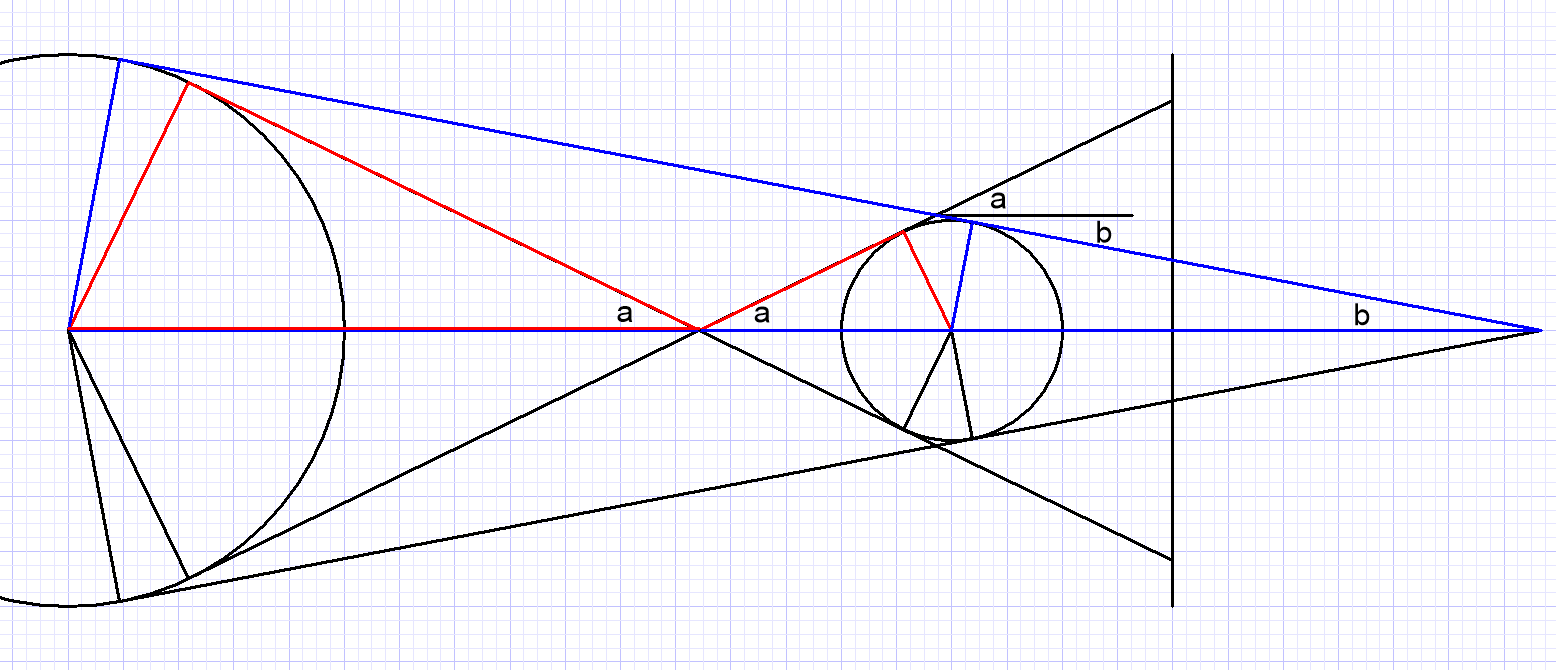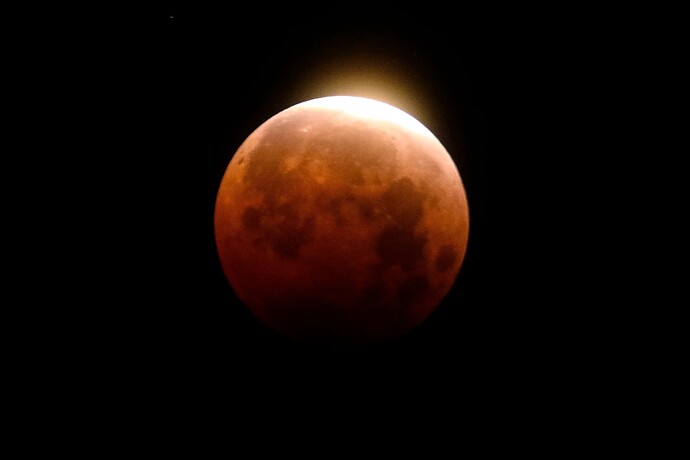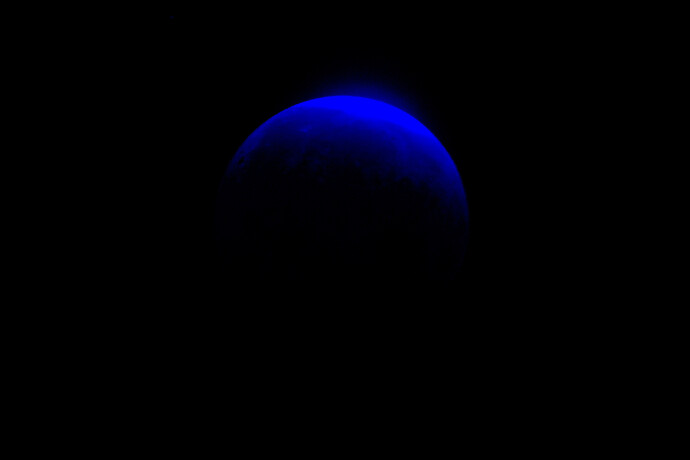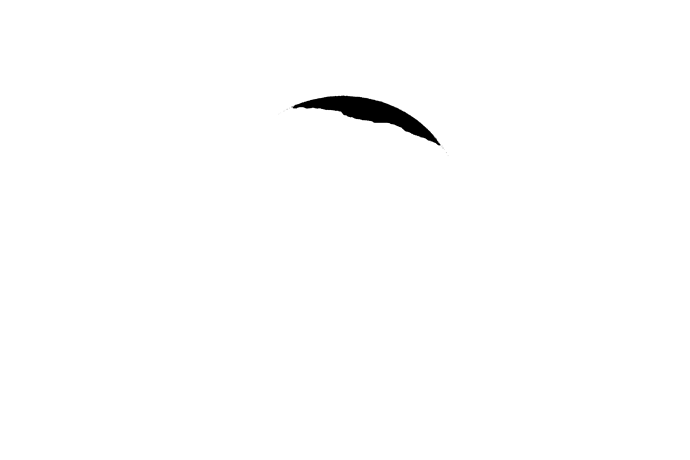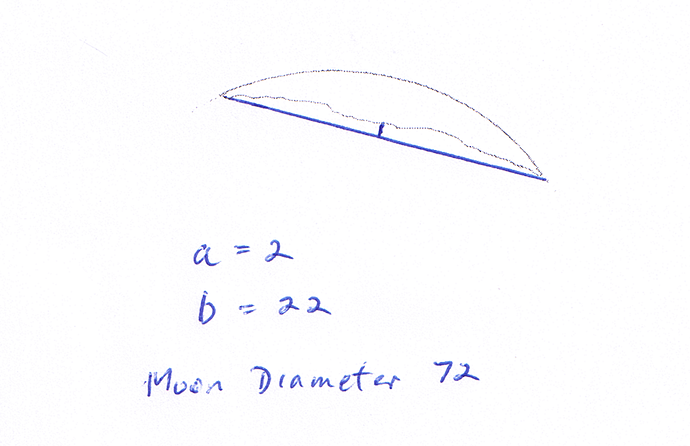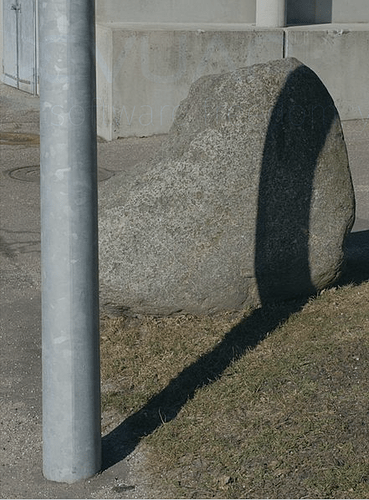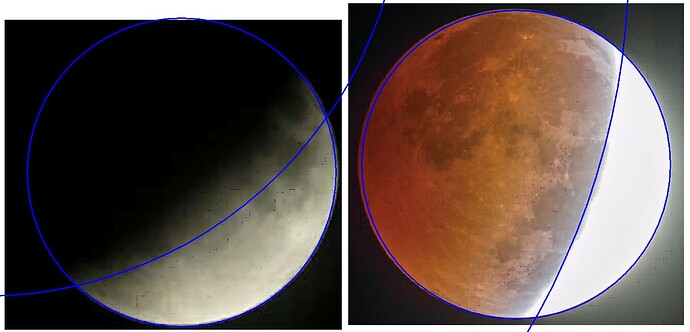Did you succeed in getting Gimp,to measure a distance?
I failed at that, resorted to,a ruler.
What is it you areinterested in… the image processing, or the method for measuring curvature.
Yes the moon is entirely covered by the penumbra shadow but you cant see its edge.
I measured 2 things
- radius of umbra shadow
- radius of moon
I think the reason that does not give the correct answer is that the umbra shadow is a cone shape, ie it shrinks in diameter as it moves from earth to moon.
see this article
How big is the Earth's shadow on the Moon?
Now, you say I can get a correction for the cone shape of the umbra, by measuring the radius of the penumbra shadow. which would require another picture, earlier in the eclipse.
I will look at the maths. I want to understand it before I try.
You say I have to average the radii of the umbra and penumbra.
Thank you
Neville
Hello @nevj
The gimp screenshot shows one way of doing the measurement, follow steps 1, 2, 3, and 4.
1 sets the units of measure ( I chose millimeters here)
2 sets the tool used ( by the way this tool can be tricky to use)
3 Sets the start ( on left near the word meters) and end of length of measure
4 shows the results just above the caption ( 4 - results in white text)
Wish you luck Gimp is not at times user friendly when you want to get things done in the Now
When not pushed for time the uses of the many tools and solutions for problems fall in easily
Images, measurements of shadows and mathematical problems and solutions are your forte, I’ll sit here and read, be amazed and amused by your tenacity to solve this.
I’ll stick to painting on canvas and Gimping up digital wallpapers thanks,
Best Regards
artytux
So it can measure a length.
Thanks. I will go have another try.
I think there is a need for some image processing software with better measuring tools… for example you might want to measure areas, or shapes as well as lengths, and not just straight lengths but length of a curve. I have used software that does such measures but it is nonfree.
Does anyone know of open source image processing apps that can measure things in images? Maybe we need to write some plugins for gimp?
@nevj
When having another go at Gimp do steps 1 to 4 and take your time it took me two or three goes to get it right for the Sshots
No plugins for The Gimp needed, read on
The good info is I felt inspired so went a trackin and found one awesome piece of software gets a lot more love from the users and reviewers than the other apps.
https://alternativeto.net/browse/search/?q=ImageJ
This is completely opensource
https://imagej.nih.gov/ij/features.html
Hopefully this is a good fix Neville.
How can anyone not love Opensource.
Regards
artytux
edit
forgot to mention it is in Debian repo so should almost everywhere else
end
I was actually going to take a look at imagej.
Some of the others look attractive too.
having another go at Gimp do steps 1 to 4 and take your time it took me two or three goes to get it right
Yes , now that I know it is possible , I will persist until I conquer it.
Thanks for your efforts
Neville
I think you’ve got it here’s another picture where I’ve vastly decreased the distances from the Earth to the Sun and the Earth to the Moon. All other ratios are approximately correct.
The top picture just shows the Sun with the Earth and Moon at the right, and, the four tangents from the Sun to the Earth.
The bottom picture just zooms in on the Earth and Moon with the four tangents terminated on a “plane” through the moon.
I have to prove that an imagined line bisecting the angle between the umbra line and the penumbra line has an orientation of 0 degrees.
I could get away with measuring the distance between the umbra curve and the penumbra curve on the moon, but I doubt if I could get them both in the same image. I would then add half that distance to the umbra radius to get the earths radius.
Thanks for all this. I had it seriously oversimplified.
Regards
Neville
Look at this drawing of the Sun and Earth with just a plane for the Moon, It is terribly not to scale, but, the initial trig. still holds
Notice the two pairs of similar triangles marked in red and blue which have the same angles (a and b) to the angles that the penumbra and umbra lines make with the “horizontal”.
Also notice that the relative sizes of these pairs of triangles is the same as the relative size of the Earth to the Sun.
Let: the radius of the Sun be S; the relative size of the Earth to the Sun be k, and, the distance from the Sun to Earth be D.
Then Sin(a) = S/D(1-k)
and, Sin(b) = S/D(1+k)
Now just insert the real values for S, D and k
You will see that because k is so small (0.009) that for practical purposes it can be ignored.
Well done. That shows that approximately Sin(a) = Sin(b) or a= b.
So the angle is approximately bisected, and the umbral and penumbral
radii can be averaged.
Finding a suitable penumbral eclipse image was difficult. I did the image processing tonight, and will have some measurements tomorrow.
Your geometry is to be admired. Mine is rusty.
Regards
Neville
@Randall @silvain @artytux
Measuring curvature of the penumbra in a lunar eclipse.
I found an image in which the edge of the penumbra can be seen across the face of the moon. It is from the same Nov 2022 eclipse used to measure the radii of the moon and the umbra.
You can see the edge of the red penumbra at the top of the moon. There may be a trace of the umbra showing at the bottom of the moon.
To threshold this image to find the region outside the penumbra, I found that it was best to work with the blue channel only . Here is the blue channel image
It shows just the areas that are NOT red - ie no penumbra
Then when we threshold only using the blue channel we get a binary image as follows
Then we can convert this to lines using an edge filter
I have cropped the line image . We are now ready to measure.
I did that step again by hand… print it out and use a ruler… still cant get Gimp Measure to do anything useful. Here are the measurements
Now some calculations.
First the above measurements were from a photo in which the Moons diameter was 72mm. In the photo used above to measure the curvature of the umbra, the Moons diameter was 116mm. So wee will convert the curent measurements, a and b, to what they would have been if the moon was 116mm diameter
a = 2 * (116/72) = 3.22
b = 22 * (116/72) = 35.44
So radius of curvature of penumbra is
R = (3.22^2 + 35.44^2)/6.44 = 196.64
From the previous work
Radius of umbra is 103.57
Radius of Moon = 58
So this gives ratio of Earths radius to Moons radius of
(196.64 + 103.57)/(2 * 58) = 2.59
Not nearly close enough to the correct figure of 3.7
So clearly measuring the curvature of fuzzy shadows on a moon photo is not precise enough for this purpose. If I use that second attempt which gave 138.36 for the umbra, the answer only goes up to 2.88.
Clearly these radii estimates are too small… the curves need to be flatter. I wonder if the curvature of the moon is contributing after all?
Thanks to all for contributing to a great exercise.
Regards
Neville
I think I missed an answer as I replied by e-mail. I was wrong in forgetting to take into account the size of the sun… so that the shadow is smaller than the earth and the penumbra is bigger.
I calculated the diameter both of the shadow and the penumbra and their ratio to the diameter of the moon (there are simple geometric proportions, knowing distances and diameters of the 3 objects
This ratio is
- 2.6465 for the shadow;
- 4.7063 for the penumbra;
-
3.667 for the ratio of the diameters of the earth and the moon (this is close to 3.6764, the mean of the two values above, which is to be expected from a geometric description, as the sun is over 389 times further than the moon).
These calculations are based on the average distances, so they are only an average value, the real values will depend of the season and the actual moon distance…
So half way between the umbra and the penumbre
(2.676 +4.706)/2 = 3.671
is indeed very close to value for earth (3.667)
Neville
That picture is taken from “the side”: try taking one with the camera directly between the post and the stone.
@silvain ,
We can learn something from your calculated ratios of sizes
Diameter relative to Moon
Calculated by Silvain My measurement Difference
Penumbra 4.7063 3.3903 1.316 (27%)
Umbra 2.6465 1.7867 0.861 (32%)
Moon 1 1.02
Earth
So, my method of measuring radius of curvature is OK … I got the Moon right, but
my measured radii for the Penumbra and Umbra lead to serious underestimates of the ratio to radius of the Moon.
The differences are not the same for Umbra and Penumbra, but are close as percentage differences (28 and 32 %)
So whatever is affecting the measurement has to be common to the Umbra and Penumbra. I still think it is the curvature of the moons surface.
If you project a shadow of a straight object onto a sphere, it looks curved, and if you photograph it , which means project the whole thing onto a 2D plane, it will appear curved in the photo.
How to calculate a correction for this I can not see at the moment. It may depend on which part of the Moon the shadow falls on.
Anyway, thanks to all for the contributions.
Last word on the Moon… It is nearly 1/4 the size of the Earth, and it is close to us, so its gravitational effects are quite noticeable. We all know about ocean tides, but did you know there are tides in the atmosphere too… when the moon is above the atmosphere bulges up and becomes thicker.
Even more interesting, the Moons gravity pulls the Earths surface toward itself. Every time the Moon passes overhead your house rises approximately 11 inches from bulging of the earths surface. You dont notice , of course, because everything moves together… except occasionally when the earths crust cant stand it and there are earthquakes.
Regards to all
Neville
One of the problems with those pictures is that for both the Umbral and Penumbral ones the eclipses are nearly full. I think it would be better to try with the shadow about half way across the moon.
I found these two pictures: then I overlaid them with circles that are the “correct size” for the two shadows.
To me it looks as though both shadows are smaller than they should be. Difficult to say for sure with the umbra, but the penumbra just looks wrong.
Any idea why?
Two possibilities
- curved surface of moon distorts the shadow edge… look at the picture of shadow of a post on a rock
- earths atmosphere does some sort of lensing, not of the shadow, but of the light beside it
I cant see the pictures. How did you upload them?

